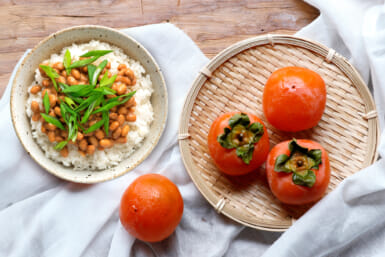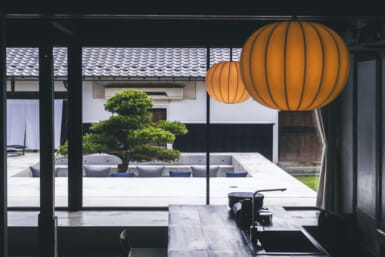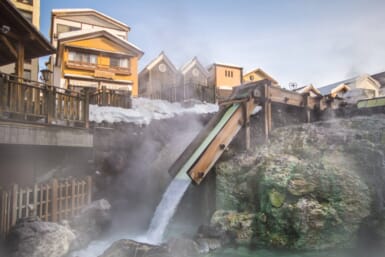Tokyo is jam packed with thousands of bars, cafes and restaurants serving some of the best food and drink in the world. No other city on Earth boasts so many Michelin starred restaurants.
Navigating such an overwhelming culinary lanscape is no mean feat, with eateries opening every week, Michelin and Zagat guides go out of date faster than Harajuku fashions.
Meet Japan Eats, a foodie website and podcast with a difference: four expats united by a love of Japanese food and drink, who between them are producing a comprehensive digital guide to all things food in Japan.
Weekender sat down with Australian, Marcus Lovitt and U.S. expat Christopher Pellegrini, two producers of Japan Eats to discuss blogging food in Tokyo.
How did “Japan Eats” start?
C: We started kicking around the idea for a drinks show—and it just kind of developed into an all round food and drink site.
What is it about food in Japan that made you start blogging?
M: It’s the obsessive nature of Japanese people and food: Bring up food with anyone here and you can talk for hours—it seems everyone is an expert. The attention to detail in Japan is just incredible.
What food do you eat the most?
M: I’m pretty stereotypical really: I eat a lot of yakitori and teppanyaki, contrary to what people think there are loads of cheap places across Tokyo.
C: I’ve been getting into noodle dishes a lot lately, I love the Waseda/Takadanobaba area, it’s full of amazing ramen restaurants.
Off the top of your head, what places do you recommend?
1. For shochu, we recommend Tokuri in Shinjuku. If you want to learn about shochu, start here.
2. Devil Craft in Kanda is great. It’s a brand new craft beer bar that serves Chicago style deep dish pizzas and will soon start brewing it’s own beer.
3. For Ramen, check out Ivan Orkin’s place, Ivan Ramen Plus, in Kyodo on the Odakyu line, it’s only about 20 minutes from Shinjuku and is well worth the journey.
4. Popeye in Ryogoku is fantastic for craft beer. Owner Aoki-san has made the entire interior non-smoking, and now he has maybe 70 different taps.
5. If you want to splash out, the Mandarin Oriental’s Signature restaurant is one of the best in the city, it may set you back ¥50,000 for two people, but it is well worth it.
6. Chemins in Akasaka is also recommended. Shibata-san is a Sommelier by trade and his wine list is incredible. If you give him enough warning, he will select some food tailored to you, for example he cooked me a special lamb dish, just because I’m from Australia.
Which area of Tokyo is best for food?
C: The whole of Kichijoji.
M: I’d say Nishi Ogikubo has some great little yakitori restaurants.
You spend a lot of time making videos and doing interviews in kitchens, do you cook at home?
M: I make a lot of bento recipes and I eat a disproportionate amount of Vietnamese and Thai food. I’m a bit of a food tourist and after Japan, I would recommend Vietnam—the food is really amazing.
C: No, I drink!—Just kidding; I have a stock island chicken dish that I’m good at making but I love eating out.
Foreigners famously hate the taste of natto, is there any Japanese food you don’t like?
M: I’m not crazy about natto, but i’ll eat it if someone orders it. I don’t really like chicken sashimi, but good sesame sauce can hide anything.
C: I like natto, it’s cheap and if you mix it with kimchi and rice, it’s pretty good.
M: Also, If i’m eating sushi, I tend to pass on uni (sea urchin), it looks disgusting!
What do you eat after a big night out?
C: Nasty microwave tortillas from a combini are my guilty pleasure. Or a budget place such as Yoshinoya, or Matsuya—the bibindon is wonderful and only costs ¥430.
M: Curry udon and miso soup always does the trick.
What’s the future of your website?
M: More videos. We have a cooking show coming out soon.
C: I’m working on a shochu book at the moment, and our Japanese food glossary is getting big hits—we hope to develop it into a comprehensive guide to Japanese cuisine and produce.
There is a lot of talk about produce and some hysteria about possible contamination of beef, are you concerned?
C: No. I’m not too worried.
M: I’m not at all worried but I think it’s OK to be concerned. If I had to give advice to tourists or newcomers I’d say be sensible but don’t panic.
Japan Booze Blind: Kyushu (Part I) from Japan Eats on Vimeo.
For more info visit: Japan Eats
Japan Eats podcast on iTunes: itunes.apple.com/au/podcast/japan-eats/









